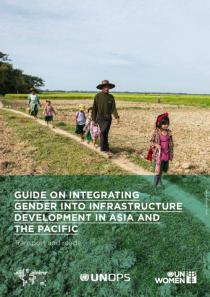The design of transport and road infrastructure must carefully consider how it is used by women, men, girls and boys and what are their needs. Good design asks many relevant questions. Who drives? Walks? Bikes? Where are they going and for what purposes? Are they using transport and road infrastructure to access education, health, or other services? What about markets and employment opportunities?
This guidance on gender mainstreaming in transport and roads provides specific ‘how-to’ guidance together with checklists across the project lifespan in four subsectors (roads, non-motorized transport and pedestrian infrastructure, transport systems, and ports), with context-specific Asia and Pacific regional information and case studies to showcase what socially-inclusive and gender-equitable infrastructure designs look like on the ground.

